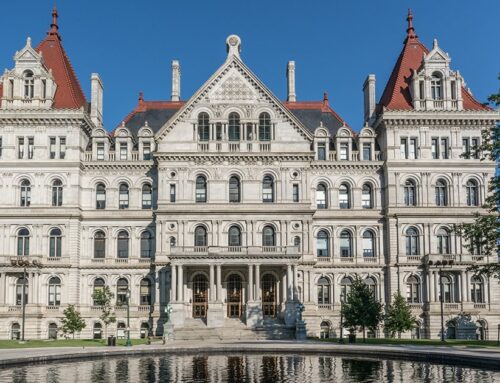The 2016 election cycle has been one of the most tumultuous in recent history not only on the national stage, but in the N.Y. Metro and Long Island regions. Here is a reliable link to election results: http://www.nytimes.com/elections/results/new-york#.
Here are some of the more poignant results and what they mean to us nationally and regionally:
In the “Race for the White House,” the Trump/Pence ticket prevailed over Clinton/Kaine, upsetting financial markets globally and domestically. The full impact on the stock market, the overall economy, and investment within the United States is thus far unknown, but so far global investors are pulling from U.S. markets, with the dollar plunging in value. How this will impact foreign investment in N.Y.C. construction development is unknown. http://www.reuters.com/article/us-usa-election-markets-idUSKBN1340KP.
The United States Senate and House of Representatives both remained in Republican control, despite an aggressive effort by Democrats to regain control of the U.S. Senate.
On the Congressional front, most incumbents in our region retained their seats. Competitive N.Y. races were in the 3rd Congressional District, which covers parts of Queens and Nassau Counties, in the seat vacated by Steve Israel. Here, Democrat Tom Suozzi beat Republican Jack Martins. Martins had vacated his N.Y.S. Senate seat to run for Congress. In the 1st Congressional District in Suffolk County, incumbent Republican Lee Zeldin beat Democratic challenger Anna Throne-Holst. In the 13th Congressional District, which is comprised of upper Manhattan and western Bronx, the seat vacated by Charles Rangel, Democrat Adriano Espaillat made history as the first elected Dominican American to the U.S. Congress, beating Republican challenger Tony Evans. In one of the most closely watched Congressional races in the country, the 19th Congressional District, Republican John Faso defeated Democrat Zephyr Teachout in a landslide victory.
In the New York State Senate, there were several highly competitive races that could have tipped control of the Senate from Republicans to the Democrats. Of the nine Long Island Senate seats, 7 incumbents have so far retained their seats (Flanagan, Boyle, Croci, Marcellino, LaValle, Hannon, Kaminsky). Still not called is the 8th Senate District, where Republican incumbent Michael Venditto is opposed by Democrat John Brooks. With all 202 districts reporting, the state says Brooks is ahead 64,499 to Venditto’s 64,466. There are 76 write-in ballots to be counted, which could tip the balance of this race. In the 7th Senate District, the seat vacated by Jack Martins in Nassau County, Republican Elaine Phillips prevailed over Democrat Adam Haber.
On Long Island in the New York State Assembly, the Republicans picked up a Long Beach Assembly seat in District 20, where Republican Melissa Miller defeated Democrat Anthony Eramo, in the seat vacated by now N.Y.S. Senator Todd Kaminsky. It is the first time the GOP has held this district in at least 50 years. In the 16th Assembly District in Nassau County, Democrat Anthony D’Urso beat Republican challenger Matt Varvaro in another open seat vacated by former Assemblywoman Michelle Schimel.
On a more local level in the Nassau County Legislative District 16, Democrat Arnold Drucker defeated Republican Louis Imbroto for the seat vacated by the death of Legislator Judy Jacobs.
The 2016 New York Senate election results beg the question, “Who will the Independent Democratic Conference (IDC) align with?”
It is commonly believed that Democrat Simcha Felder will remain aligned with current Majority Leader John Flanagan and the Republicans. If Independent Democratic Conference (IDC) Leader Jeff Klein and the rest of the IDC also continue to conference with the Republicans, the Republicans would remain in control of the Senate. However, until a statement is released from the IDC with a final determination of who they will align themselves with this legislative session, control over the Senate remains unclear.
What do the 2016 election results mean for the New York construction industry?
The impact of the next administration on the construction industry is still unknown. There was so much uncertainty about the elections that some developers delayed new major projects waiting for the outcome. The economy is tied closely to the strength of the construction industry, so we must continue monitoring the Dow and major trade agreements. Moving forward, we need to pay close attention to President-elect Trump’s $1 trillion infrastructure plan announced this past October, a plan to be funded largely through private investment and tax credits. http://www.constructiondive.com/news/with-donald-trump-as-president-whats-next-for-the-construction-industry/429978/.
Specific to 421-a discussions, a potential shake-up in IDC alignment could allow Democrats a majority in the N.Y.S. Senate, impacting the direction Governor Cuomo, REBNY, and labor are moving in regarding a restoration of 421-a. A Democratic majority would certainly advocate advancing a more progressive version of 421-a, favorable to Mayor de Blasio and affordable housing advocates.
If you have any questions about a specific election or how the results of yesterday’s election will impact your firm and industry, please feel free to reach out to Diane Cahill, Founder and CEO at dcahill@cahillstrategies.com, or the Cahill Strategies team through our website at www.CahillStrategies.com.






